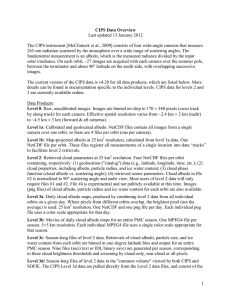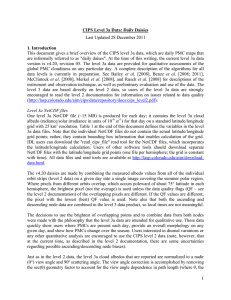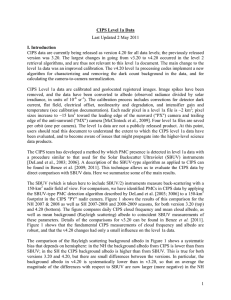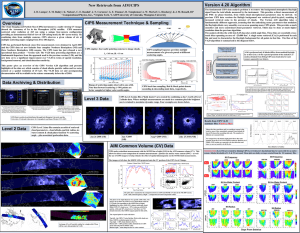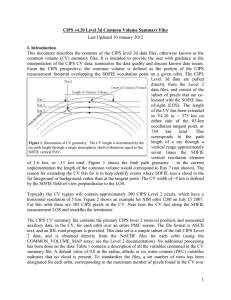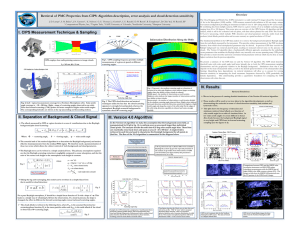Cloud Imaging and Particle Size (CIPS) Instrument Overview (
advertisement
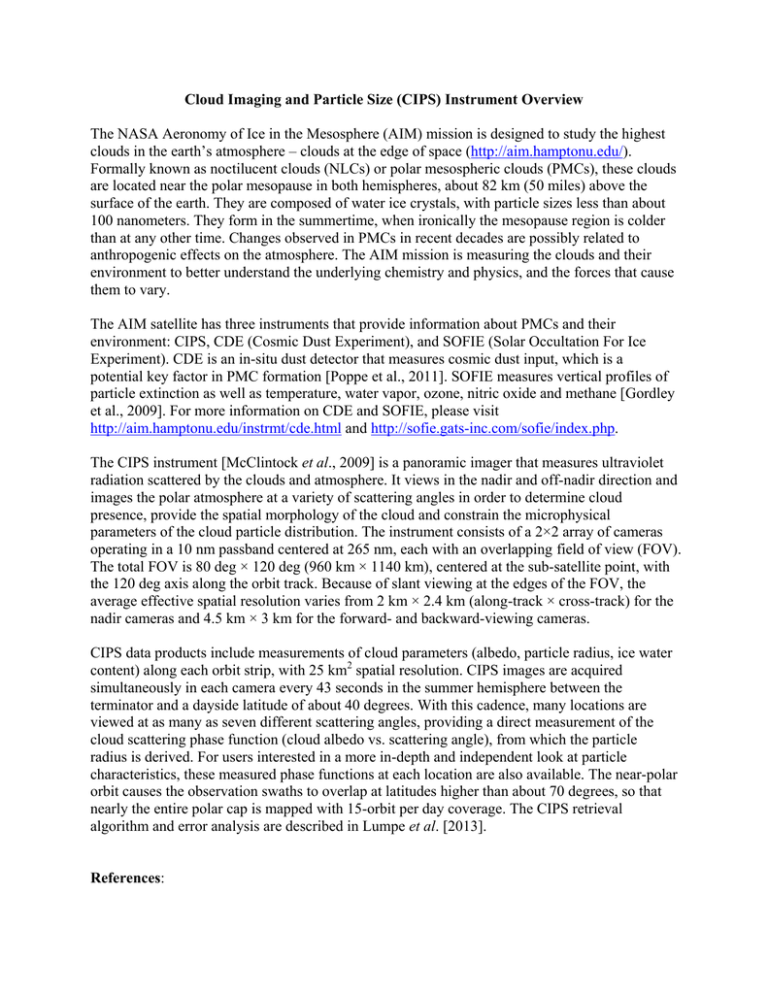
Cloud Imaging and Particle Size (CIPS) Instrument Overview The NASA Aeronomy of Ice in the Mesosphere (AIM) mission is designed to study the highest clouds in the earth’s atmosphere – clouds at the edge of space (http://aim.hamptonu.edu/). Formally known as noctilucent clouds (NLCs) or polar mesospheric clouds (PMCs), these clouds are located near the polar mesopause in both hemispheres, about 82 km (50 miles) above the surface of the earth. They are composed of water ice crystals, with particle sizes less than about 100 nanometers. They form in the summertime, when ironically the mesopause region is colder than at any other time. Changes observed in PMCs in recent decades are possibly related to anthropogenic effects on the atmosphere. The AIM mission is measuring the clouds and their environment to better understand the underlying chemistry and physics, and the forces that cause them to vary. The AIM satellite has three instruments that provide information about PMCs and their environment: CIPS, CDE (Cosmic Dust Experiment), and SOFIE (Solar Occultation For Ice Experiment). CDE is an in-situ dust detector that measures cosmic dust input, which is a potential key factor in PMC formation [Poppe et al., 2011]. SOFIE measures vertical profiles of particle extinction as well as temperature, water vapor, ozone, nitric oxide and methane [Gordley et al., 2009]. For more information on CDE and SOFIE, please visit http://aim.hamptonu.edu/instrmt/cde.html and http://sofie.gats-inc.com/sofie/index.php. The CIPS instrument [McClintock et al., 2009] is a panoramic imager that measures ultraviolet radiation scattered by the clouds and atmosphere. It views in the nadir and off-nadir direction and images the polar atmosphere at a variety of scattering angles in order to determine cloud presence, provide the spatial morphology of the cloud and constrain the microphysical parameters of the cloud particle distribution. The instrument consists of a 2×2 array of cameras operating in a 10 nm passband centered at 265 nm, each with an overlapping field of view (FOV). The total FOV is 80 deg × 120 deg (960 km × 1140 km), centered at the sub-satellite point, with the 120 deg axis along the orbit track. Because of slant viewing at the edges of the FOV, the average effective spatial resolution varies from 2 km × 2.4 km (along-track × cross-track) for the nadir cameras and 4.5 km × 3 km for the forward- and backward-viewing cameras. CIPS data products include measurements of cloud parameters (albedo, particle radius, ice water content) along each orbit strip, with 25 km2 spatial resolution. CIPS images are acquired simultaneously in each camera every 43 seconds in the summer hemisphere between the terminator and a dayside latitude of about 40 degrees. With this cadence, many locations are viewed at as many as seven different scattering angles, providing a direct measurement of the cloud scattering phase function (cloud albedo vs. scattering angle), from which the particle radius is derived. For users interested in a more in-depth and independent look at particle characteristics, these measured phase functions at each location are also available. The near-polar orbit causes the observation swaths to overlap at latitudes higher than about 70 degrees, so that nearly the entire polar cap is mapped with 15-orbit per day coverage. The CIPS retrieval algorithm and error analysis are described in Lumpe et al. [2013]. References: Gordley, L.L., et al., The solar occultation for ice experiment, JASTP 71, 300-315, doi:10.1016/j.jastp.2008.07.012, 2009. Lumpe, J. D., S.M. Bailey, J.N. Carstens, C.E. Randall, D. Rusch, G.E. Thomas, K. Nielsen, C. Jeppesen, W.E. McClintock, A.W. Merkel, L. Riesberg, B. Templeman, G. Baumgarten, and J.M. Russell, III, Retrieval of polar mesospheric cloud properties from CIPS: algorithm description, error analysis and cloud detection sensitivity, J. Atmos. Solar-Terr. Phys. (2013), http://dx.doi.org/10.1016/j.jastp.2013.06.007. McClintock, W.E., et al., The cloud imaging and particle size experiment on the Aeronomy of Ice in the mesosphere mission: Instrument concept, design, calibration, and on-orbit performance, JASTP 71, 340-355, doi:10.1016/j.jastp.2008.10.011, 2009. Poppe, A., D. James, and M. Horanyi, Measurements of terrestrial dust influx variability by the Cosmic Dust Experiment, Planet. Space Sci. 59, 319-326, doi:10.1016/j.pss.2010.12.002, 2011. Last updated 20130825.







